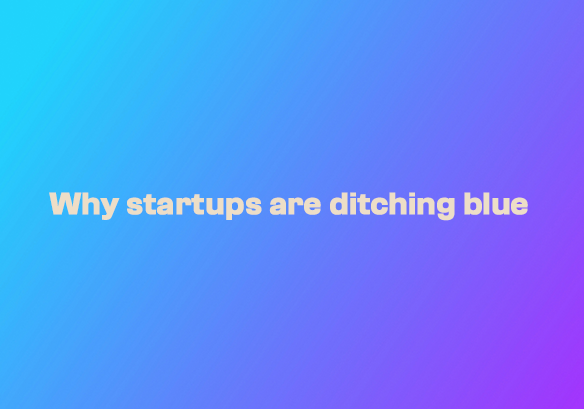Not long ago, building a tech brand felt like checking off a familiar list. Clean typography. Friendly but professional tone. And somewhere in that palette, a shade of blue. Blue meant trust. It meant precision, reliability, and logic. It helped startups feel grown-up, serious. And in the world of software, where you’re often selling something invisible, that color did a lot of heavy lifting.
But things are changing. Scroll through the latest batch of design portfolios or startup landing pages and you’ll notice something missing. That familiar blue has begun to fade, replaced by softer, more human tones—digital lavender, muted apricot, and calming greens. These aren’t just aesthetic choices. They signal a shift in how tech wants to be seen.
This evolution isn’t a rejection of blue so much as an acknowledgement that its meaning has dulled. For years, it worked. Facebook, LinkedIn, Skype, Stripe—all swore by it. It became synonymous with the idea of a trustworthy digital product. But what happens when every product makes the same promise, using the same visual code? Trust starts to feel generic. Visual language becomes noise.
Now, as the boundaries between lifestyle and tech blur, new startups want to say something else. They want to say they're calm, safe, even tender. They want you to feel seen, not sold to. And that’s why they’re choosing colors that reflect emotion instead of efficiency. Where blue once offered authority, these new palettes offer intimacy.
There’s also something practical at work here. Pastels are the unofficial language of design tools like Canva and Notion templates. They’re embedded in the default choices founders see when they’re moving fast. But that doesn’t mean the shift is thoughtless. In fact, it’s incredibly strategic.
Muted colors don’t just look good. They stay out of the way. They let typography breathe, let motion and layout tell the story. They support instead of shout. And in an age when interfaces are everywhere—on your wrist, in your pocket, projected on your wall—that kind of restraint feels modern.
What we’re seeing is less about taste and more about tempo. A softer palette slows you down. It asks you to read instead of scan. It suggests that the company behind it isn’t in a rush to impress, because it has nothing to prove. That confidence, ironically, says more than blue ever could.
So what replaces the old guard? Lavender seems to be having a moment, with color trend reports from Adobe and Pantone highlighting it as the tone of the year. It’s not just pretty—it’s calming, otherworldly, almost meditative. And when paired with clay, off-white, or moss green, it creates a palette that feels less like a digital interface and more like a room you’d want to live in.
That’s the point. Startups in 2025 don’t want to look like software companies. They want to look like homes, studios, libraries. Places of thought, not transaction.
This doesn’t mean blue is gone for good. Some of the most timeless brands in the world still use it brilliantly. But it’s no longer a shortcut. It has to be earned. If you choose blue now, you have to say why.
And maybe that’s the most exciting part. We’re finally moving past safe defaults. Color, like brand, is becoming a choice again.
